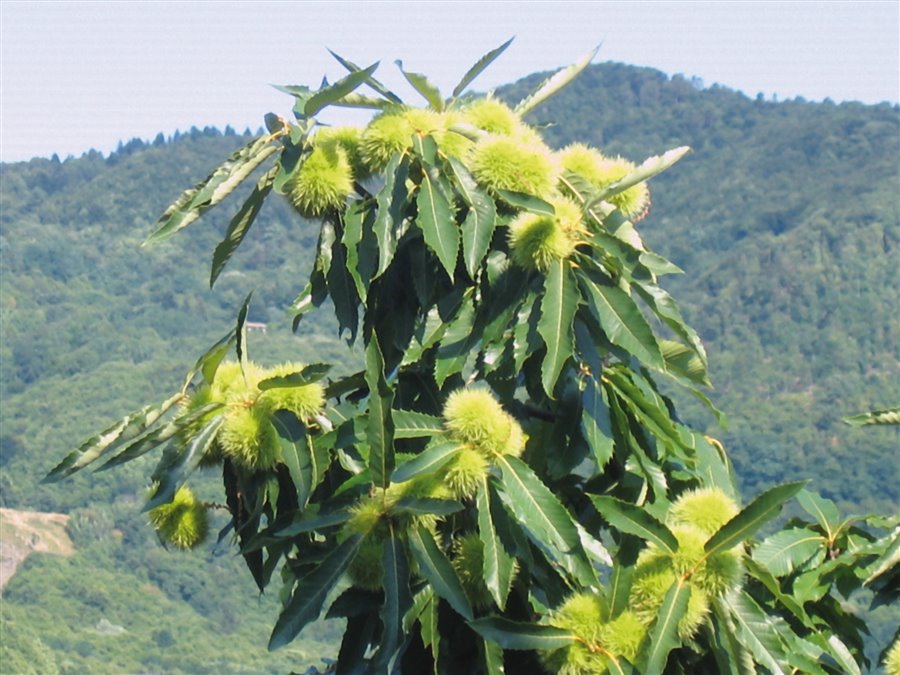On our hills, from an altitude of seven to eight hundred meters, the olive tree gives way to the chestnut tree whose cultivation, today abandoned, was for centuries a vital asset in the poor survival economy of our mountain people.
The chestnut grove provides excellent timber, offers an ideal habitat for numerous species of game, gives wood to burn, feeds mushrooms and spontaneous fruits; but above all it produces the precious chestnut which, from the early Middle Ages until the end of the nineteenth century, represented the inexpensive basic food of the populations of the whole Ligurian Apennine Arch.
To preserve them throughout the year, chestnuts were deposited on the upper floor of the "aubergu", a small two-storey building built in the chestnut groves near a terracing strip, where the fruits were laid out on the trellis that divided the two floors, and dried thanks to the fire that was lit on the ground floor; one hundred kilos of green chestnuts produced less than forty kilos of dried chestnuts.
To peel them, the chestnuts were placed into a bag (greased with soap on the outside so that it did not get worn out) that was repeatedly slammed on a log or, spread on the ground, they were beaten with “a cauda”, two sticks joined by a strap, or with a wooden tool with a cusp base. Finally, they moved on to the "vallu", i.e. they were dropped repeatedly in a basket with very low edges exposed to the wind which dispersed the light crushed skins.
To reiterate the decisive importance of the chestnut in feeding the mountain people remain their proverbs, often seasoned with bitter self-irony.
Precious and therefore not to be wasted, the saying suggests: "Ferùe, perdùe; bruschèe, bruscièe; perèe,
mangèe; "(boiled = wasted; roasted = burned; peeled = eaten), which advises on how to cook them in order to determine the least waste.
The diet varies bitterly from: "Aa matìn, castagne; au dì, pestuni; aa sea, castagnùn” (in the morning,
chestnuts; at lunch, pieces of chestnut; in the evening, castagnaccio); to those who get tired, it is remembered as a consolation that "Quande u buccùn u l'a passau u gargantùn, tantu i sun e castagnee che u magrùn" (when the mouthful has passed the throat, so much are the chestnuts that the meat); while the conclusive: "A chi l’a famme, e castagne i pan lasagne” (to those who are hungry chestnuts look like lasagna) reminds us that for our mountain people a simple plate of lasagna was already a luculian aspiration, to be daydreamed while they were swallowing chestnuts to at least get rid of the biggest hunger and prepare for a new day of hard work.
The generous chestnut groves, participating witnesses of many sacrifices, flourish now abandoned on our mountains as a verdant memory of times so hard as to seem almost incredible today; and since then not even a hundred years have passed.


